Lattice is an engineering and product focused company pushing the envelope of Ethereum applications and infrastructure. We are the team behind MUD, an open-source operating system for developing autonomous worlds and other ambitious onchain applications. Our team is also building Redstone, a Plasma-inspired L2 chain, which will scale autonomous worlds and ambitious applications built with MUD. You can learn more about our history below.
In 2022, we launched OPCraft, a fully-onchain procedurally-generated voxel game that attracted over 1,500 unique players who submitted 3.5 million transactions over the course of ten days. OPCraft was built by Lattice in just 1.5 months using MUD v1, an early version of our operating system. You can learn more about OPCraft here, here, and here.
In addition to MUD and Redstone, our developers are building Sky Strife, an onchain RTS game, and other infrastructure-level products related to MUD.
In 2020 and 2021, Ethereum and the applications built on top of it were growing increasingly sophisticated, but there were major gaps in both developer tooling and the kinds of projects that were being deployed. DeFi was growing, NFTs were in their nascency, but there were few applications that were forums for play, emergent behavior, or the kind of complexity that could one day give rise to autonomous worlds. Ethereum was becoming the world’s financial computer, but was it becoming the world computer?
Read more
Amid this period of contentious DeFi forks, yield farming, and early games that incorporated NFTs, a new experiment arose. This experiment was called Dark Forest, and it was unlike anything that had been deployed on the EVM before. Dark Forest was the first fully onchain game — the game logic, and all of its data was written onchain, and game state could be derived from chain history. No servers, no intermediaries, just pure groundtruth, facilitated by the blockchain and accessible to anyone. Dark Forest also was the first game to use zkSNARKs to create an incomplete information game onchain.
Dark Forest attracted hundreds of players, who were intrigued first by the gameplay, but then began building clients and plugins for the game itself. There were marketplaces for in-game NFTs, plugins to automatically schedule moves, a “remote snarker” which sped up the rate a player could hash unknown parts of the map, an exchange that permitted users to reveal the location of one of their Dark Forest planets every day, in exchange for bounties, and dozens of other community-created augmentations to the core game. Dark Forest was becoming a complex, emergent network.
In 2020, Lattice’s founder, Ludens, sent a message to a stranger named Gubsheep, one of the developers behind the game.

Soon, Ludens was on his way to Mexico, where he began collaborating with the Dark Forest team. It was the beginning of the ideas and challenges that would give rise to Lattice and MUD.
In the Summer of 2021, Ludens wanted to make a new game. He was joined by Alvarius, and the two got to work on zkDungeon, an onchain game that was a cross between a board game and a battle royale. After months of tireless iteration, the team had a working demo running.
Read more
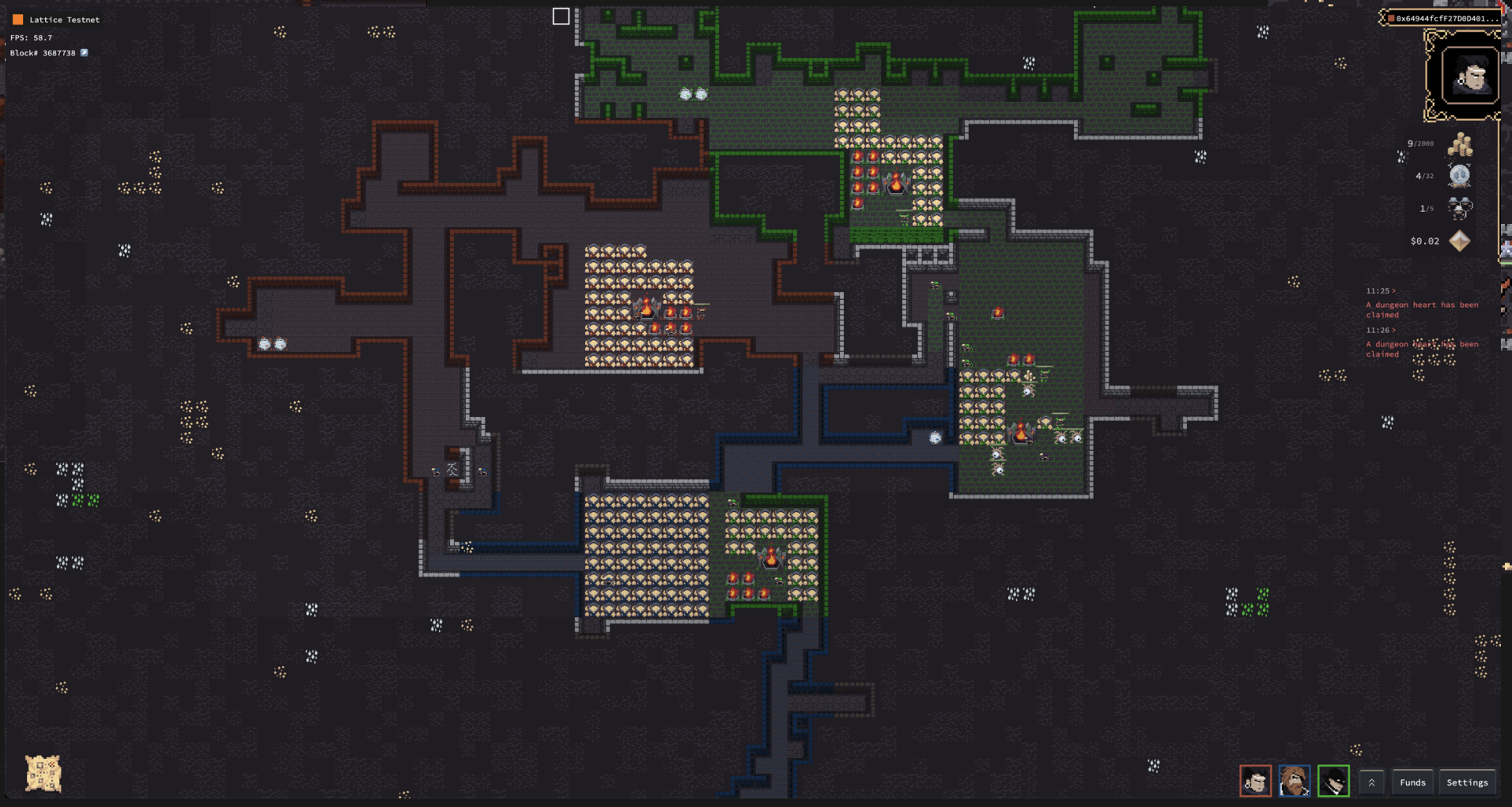
But, there were problems. At the time, Ethereum developer tooling wasn’t equipped to handle ambitious applications. Ludens and Alvarius wanted developers building clients and plugins on top of zkDungeon to have a seamless and intuitive experience — but there was no framework that made contributions to the world approachable. Something needed to change.
Ludens and Alvarius, with the help of other collaborators, realized that they needed to build an operating system before they could launch a game. They needed a framework and a protocol to handle the inevitable complexity of game code, and to counteract the developer-unfriendly patterns inherent in the way smart contracts are traditionally written. After exploring numerous frameworks for game development, the team discovered the ECS (Entity, Component, System) pattern, which became the foundation on which MUD v1, the team’s game engine, was formed.
Read more
In the spring of 2022, at the D.E.F.C.O.N. conference in Amsterdam, Ludens announced Lattice, the company and Alvarius introduced MUD and the ECS framework in more detail. Soon, Lattice was joined by Kooshaba, one of the core developers on the Dark Forest team, and Biscaryn, who came aboard as our Chief-of-Staff. In the Summer of 2022, we officially incorporated. That Summer, the team began a full sprint on developing MUD. We held a summit in NYC, began developing the chains, infrastructure, and services that would become the MUD testnet and MODE, and also started hacking on a game called MUD War, which would eventually become Sky Strife. In August 2022, Ludens published Autonomous Worlds (Part 1) which would become the touchstone for any team looking to build complex, emergent systems on Ethereum.

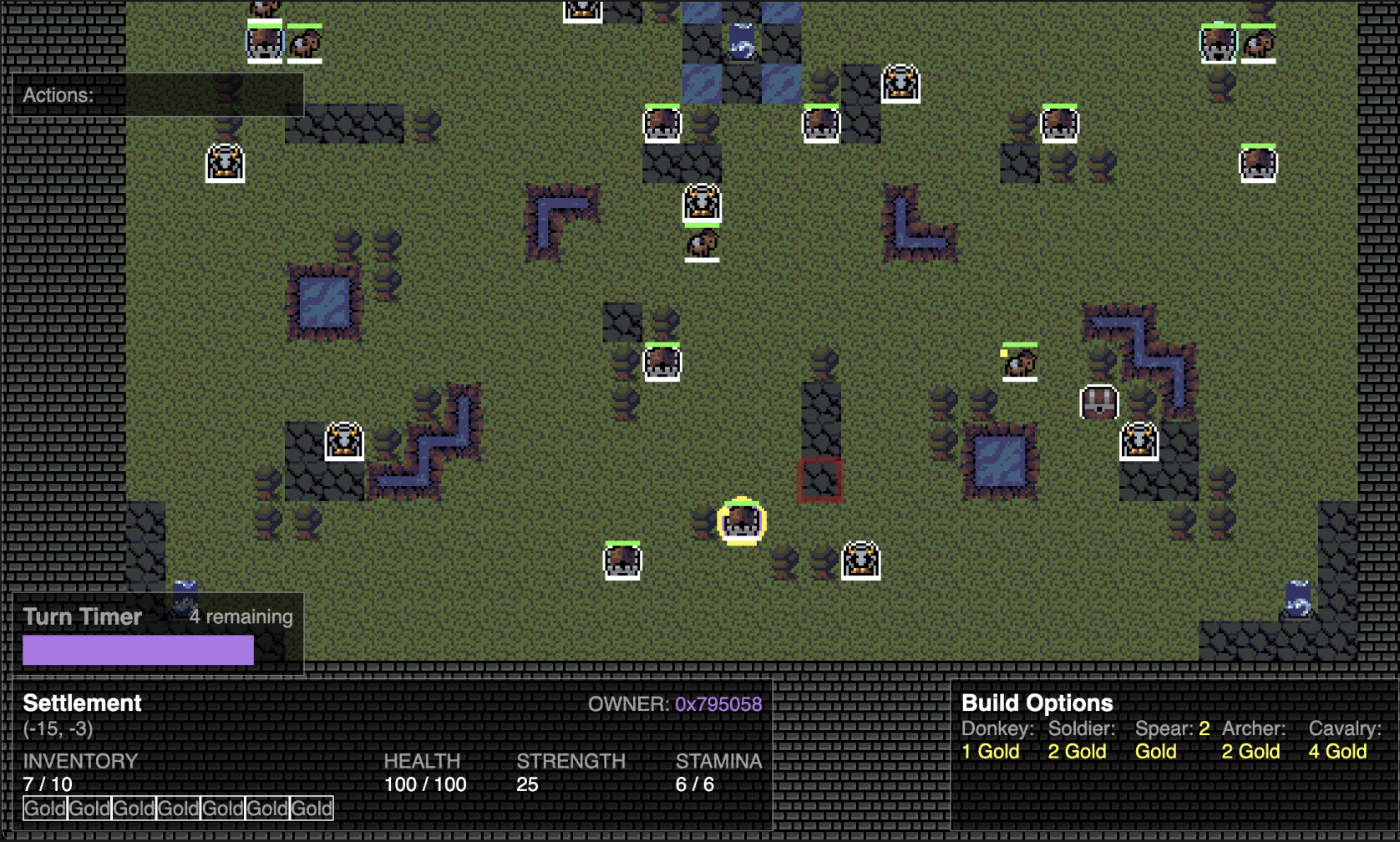
In the Fall of 2022, with MUD v1 in a relatively stable state, we invited over a dozen teams to London, to participate in a residency focused on building games and applications using MUD. We were blown away by the complexity and innovation that we saw. Our intuition around the need for a robust operating system to enable onchain applications was validated.
Read more
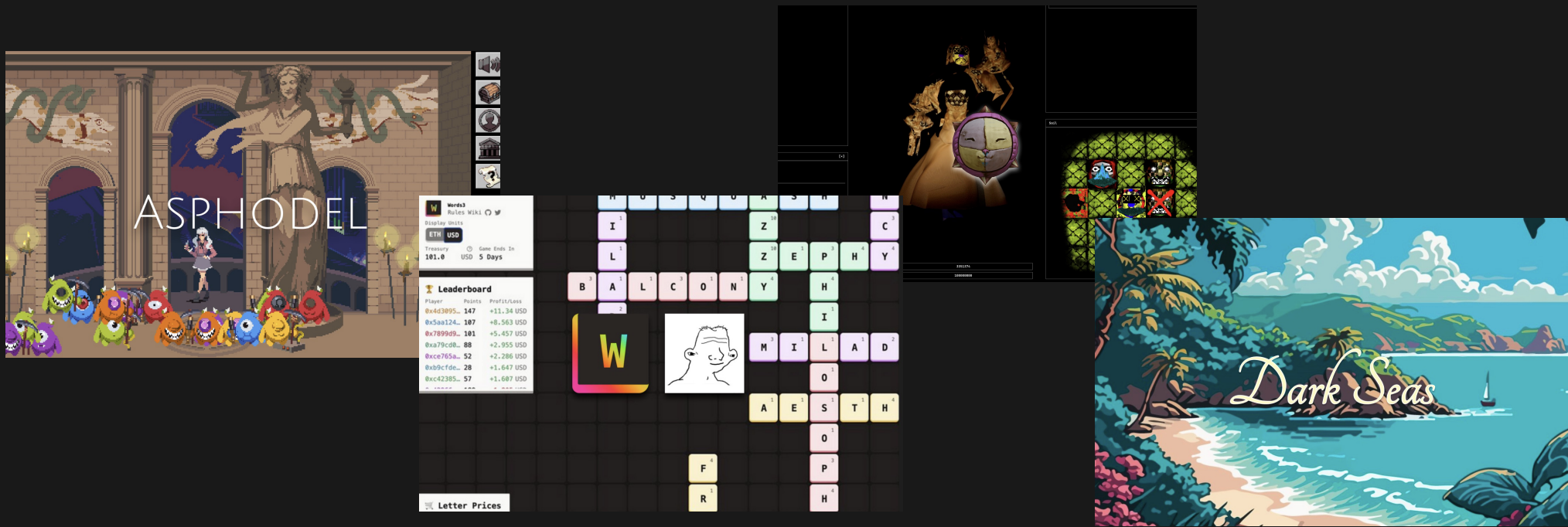
In-house, the Lattice team was hard at work on a new game called OPCraft, a voxel-based onchain game that pushed the limits of both MUD, and Optimism, the EVM-equivalent rollup upon which OPCraft was deployed. In the ten days that OPCraft was live, the game played host to emergent life onchain — new plugins, custom smart contracts, and even a Supreme Leader, all surfaced when the game was live.
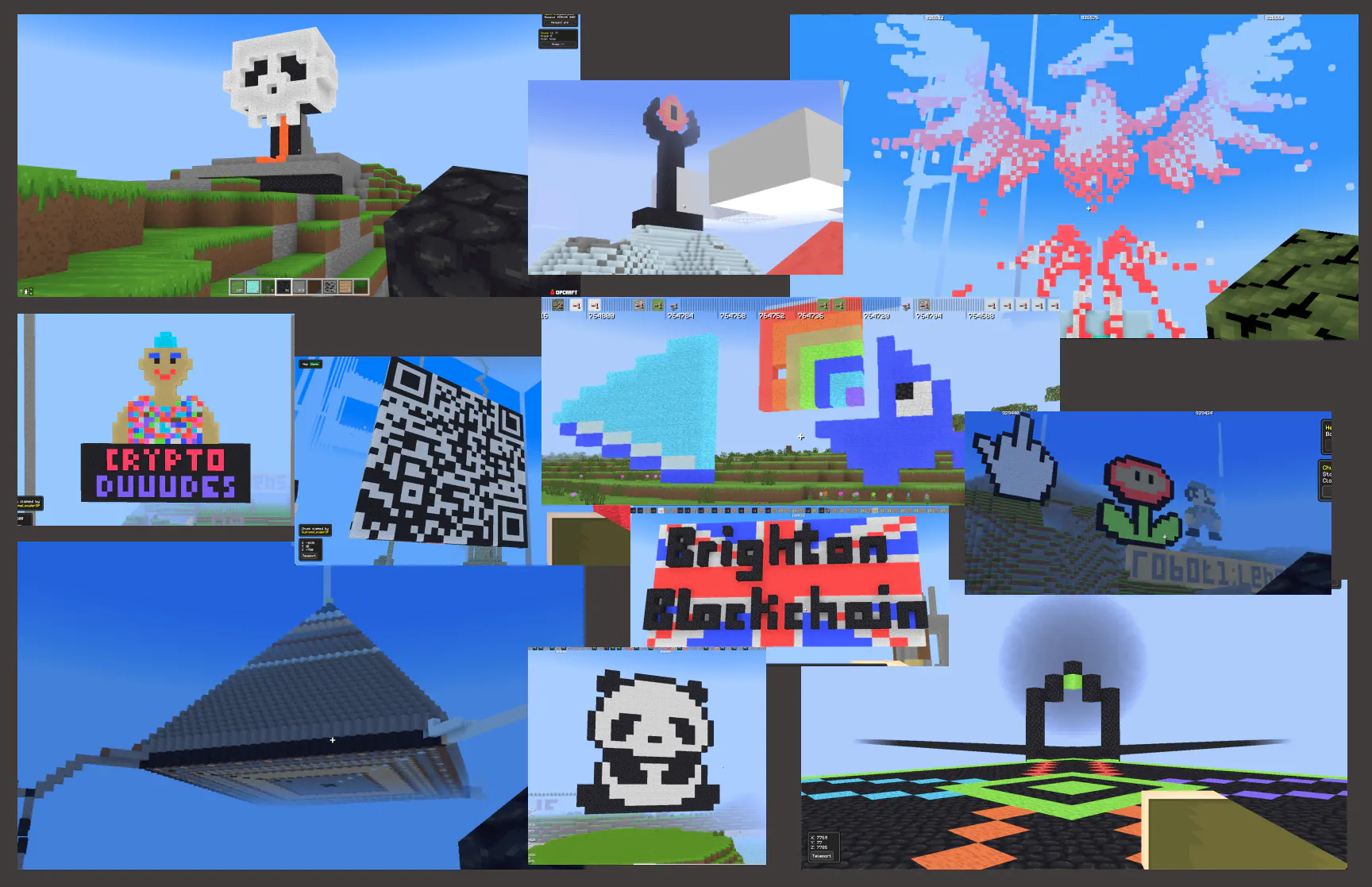
In October 2022, at Devcon in Bogota, the team debuted MUD v1 for a mass audience. Directly after, we held an 80-person Autonomous Worlds Symposium to demonstrate the capabilities on MUD v1 in more detail. In November, Frolic, one of the most prolific plugin-builders on OPCraft, joined the Lattice team full-time.
In the new year, we welcomed seven more people to the team, across Engineering, Operations, and Product Management. Sky Strife development hit a stride, and we launched new tutorials for MUD to give new developers an easy point of entry to the MUD ecosystem.
Read more
Our focus intensified on improving MUD, and we began building out features to bring MUD v2 to a stable state. MUD v2 is a modularization across the entire stack: we modularized our data model to bypass Solidity’s compiler-driven data storage. We modularized our plugin system, to give developers flexibility in how they use MUD. We modularized our sync stack, to allow for synchronizing contract and client state, with support for querying the client and our automatic indexer, MODE, in SQL. Our MUD v2 feedback loop was informed by our own work on Sky Strife, and by needs of those building applications using MUD. You can read more about the process here.
In Spring 2023, we partnered with ETHGlobal where we saw over 400 hackers submit over 100 different projects, built on MUD v2. We continue to work on MUD v2, as well as many internal initiatives related to EVM infrastructure. We also began to prepare MUD v2 for an audit, which we commenced with Open Zeppelin.
With MUD reaching stability, more ambitious onchain applications began to proliferate. Teams like Primodium, Small Brain Games, our in-house game Sky Strife, and more were deploying on testnets and L2s with more regularity. But state growth in MUD worlds, and data-intensive transactions in many applications made us observe that even L2’s may not support MUD apps in the long-term.
Read more
Behind the scenes, we were working on our own solution to this problem. As early as 2022, we began researching ways to scale transactions in MUD worlds. At Devconnect in 2023, this culminated with the launch of Redstone, a Plasma-inspired L2 built on the OP Stack, which prioritizes cost-effectiveness, and achieves it through offchain data-availability. You can read more about the history of Redstone here. With Redstone, we plan to support MUD worlds, and other ambitious onchain applications that want to scale effectively. Redstone also represents and expansion of Lattice’s engineering efforts. With the MUD engine, we built software for the EVM, and Redstone is the beginning of our expansion into EVM hardware. We’re excited to continue our mission of pushing limits to go beyond what is currently possible to achieve on the EVM.
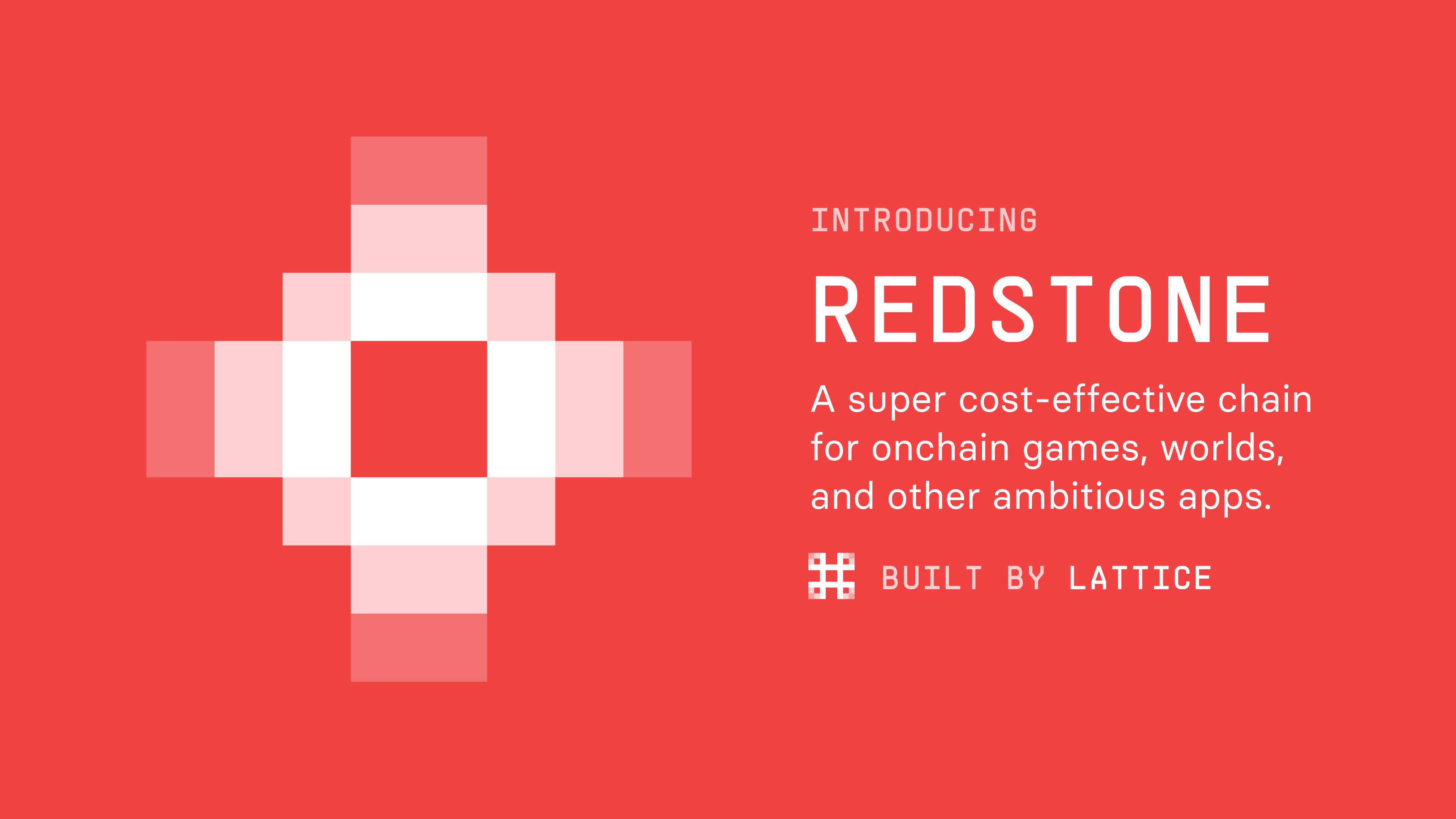
Lattice is an engineering and product-focused company pushing the envelope of Ethereum applications and infrastructure. We are the team behind MUD, an open-source operating system for developing autonomous worlds and other ambitious onchain applications. Our team is also building Redstone, a Plasma-inspired L2 chain, which will scale autonomous worlds and ambitious applications built with MUD. You can learn more about our history below.
In 2022, we launched OPCraft, a fully-onchain procedurally-generated voxel game that attracted over 1,500 unique players who submitted 3.5 million transactions over the course of ten days. OPCraft was built by Lattice in just 1.5 months using MUD v1, an early version of our operating system. You can learn more about OPCraft here, here, and here.
In addition to MUD and Redstone, our developers are building Sky Strife, an onchain RTS game, and other infrastructure-level products related to MUD.
MUD is an operating system for developing onchain applications on any EVM-based blockchain. MUD is a departure from traditional patterns in writing smart contracts, and was developed in response to a number of observations around the difficulty of developing onchain applications today. Unlike traditional smart contracts, MUD enforces a separation of state (saved in Store, and acting as a replacement for Solidity compiler-driven data storage) and logic (which is defined using Systems, and reads and writes to the Store).
Additionally, MUD comes with an automatic indexer for applications designed using MUD. Unlike traditional applications which must be written with view functions, custom indexers, and subgraphs in mind, our indexer automatically works with any MUD application, allowing anyone to easily query state and sync with the network. MUD also introduces World, which is how we orchestrate new applications built using MUD. World is a new network where you (or anyone else) can deploy state and logic.
To get started, read our documentation and walk through our tutorials, all of which are designed to get you up and developing using MUD. We also have a number of tutorial videos on our YouTube channel. The best place to ask questions or view questions from other developers in the community is our Discord channel.
We host monthly Community Demo calls on the second Thursday of every month, and monthly Core Developer calls on the last Thursday of every month, both at 2:45pm BST / 9:45am EST.
Anyone looking to push the limits of what can be done onchain today.
In addition to projects being developed in-house at Lattice, there are many different games and applications in development today. Additionally, Lattice recently held an Autonomous Worlds hackathon with ETHGlobal, where we saw over 400 hackers submit over 100 different projects. You can find the winners of the hackathon here and all submissions here.
In addition to the AW hackathon, we have held multiple developer summits and working sessions. Videos and demos from our autonomous worlds residency from winter 2022 can be found here.
We have a strong and open developer ecosystem around MUD. If you’d like to start contributing, we keep a list of good low-hanging first PRs to get you started. If you’re interested in making a PR to the MUD codebase, we suggest you fork the repo, push to your fork, and then open a PR from that fork to the main repo. Feel free to reach out on Discord if you have any questions. If you’d like to become a MUD Core Developer, reach out to someone on the team on Discord.
Redstone is a Plasma-inspired L2 built on the OP Stack. Instead of storing data onchain, Redstone posts data commitment hashes to mainnet Ethereum, and allows anyone to post challenges of that data onchain. We built Redstone to be a home for MUD applications and other ambitious applications. Learn more about Redstone here and here.
Currently, our developers are finalizing MUD v2 and Sky Strife. We are also working on Redstone, our Plasma-inspired L2 for the OP Stack. You can find our detailed MUD development roadmap here, and by attending our monthly core developer calls.
Lattice is funded entirely by grants from organizations such as 0xPARC Foundation and the Optimism Foundation.
0xPARC is the main funder and incubator of Lattice. 0xPARC drives research in a number of frontier technology categories related to Ethereum, blockchains, and cryptography. In addition to grants, Lattice works closely with the research talent at 0xPARC in areas related to zero-knowledge, identity, and Ethereum hardware.
We have offices in London, where six of our thirteen employees are based. The team is distributed across the UK, Europe, the United States, Central America, and Asia, but we regularly gather for team coworking sessions and retreats.
We are always open to partnering with ambitious teams building onchain applications or infrastructure that can support complex networks on Ethereum. If you are from a gaming team, application company, blockchain network, or are building open source tools for Ethereum that could work well with MUD, please get in touch at partnerships@lattice.xyz.
Check out our Careers page.